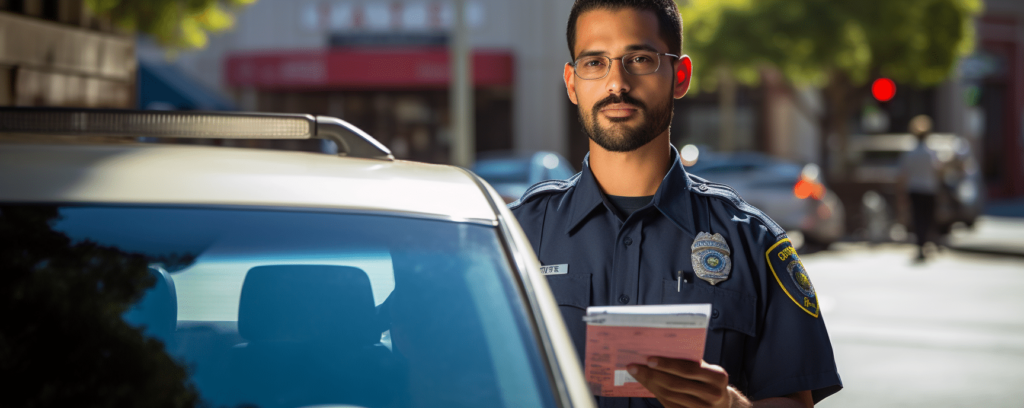
“Can you park in a bicycle lane?” – Wondering about this? The short answer is no. Parking in bike lanes is illegal in most places, obstructs paths for cyclists, and can result in fines or even your vehicle being towed. This article delves into the legalities, risks, and the impact of parking in these designated areas.
Key Takeaways
- Parking in bicycle lanes is illegal in many cities, posing safety risks to cyclists and leading to legal penalties such as fines and vehicle towing for motorists.
- Vehicles parked in bike lanes create safety hazards by forcing cyclists to merge into traffic, increasing the likelihood of accidents and injuries.
- Preventative measures include familiarizing oneself with local traffic laws, choosing alternative parking spots, promoting bicycle-friendly infrastructure, and adhering to road etiquette to prevent bike lane obstructions.
Contact us today and we will help you get the compensation that you deserve.
Parking in Bicycle Lanes: The Legal Perspective
In most cities, traffic laws clearly state that bicycle lanes are for the exclusive use of bicycles. For instance, in the city of Las Vegas, it’s specifically illegal to park, idle, or drive in bike lanes, with penalties that include fines and the possibility of vehicle towing. These laws exist to safeguard cyclists and keep traffic flowing smoothly, not to cause inconvenience to motorists.
Ignoring these laws not only puts bicyclists at risk, but it also has legal consequences for motorists. Regardless of whether you’re pressed for time or struggling to find an appropriate parking space, parking in a bike lane could result in a traffic fine or even a towed vehicle. Remember, the convenience of a parking spot is never worth compromising safety or breaking the law.
Consequences of Parking in Bike Lanes
Parking a vehicle in a bike lane creates a domino effect of consequences, from obstructing cyclists and creating safety hazards to increasing accident risks.
We will now examine these consequences in greater detail.
Obstructing Cyclists
Imagine you’re a cyclist cruising along the bicycle lane when suddenly, you’re confronted with a parked car blocking your path. Your options? Either stop and wait or hazardously enter a lane meant for motor vehicle traffic. This disruption to the safety and flow of cyclist traffic is a major issue caused by parked vehicles in bicycle lanes.
The design of bike lanes serves to shield cyclists from the swifter pace of motorized traffic. This protective purpose is compromised when cyclists are forced to merge into it. Moreover, trying to navigate around parked vehicles can lead to confrontations with a web of streetcar tracks, increasing the risk of crashes.
Safety Hazards
When vehicles are parked in bike lanes, cyclists are forced to navigate around, merging with fast-moving motor vehicle traffic. This sudden maneuvering can cause serious safety issues, including disruptions in their path, sudden stopping, and making dangerous maneuvers. Encountering additional road hazards such as streetcar tracks when leaving the bike lane further increases the likelihood of crashes. These incidents can even result in serious injuries, such as spinal fractures and broken ankles.
Picture a cyclist, forced into traffic lanes by parked vehicles, attempting to merge with motor vehicle traffic and you can see how grave the situation can become. Blocked bike lanes can also lead to situations where drivers fail to yield to cyclists, resulting in aggressive incidents.
Accident Risks
The risk of accidents increases exponentially when cyclists have to merge with faster-moving traffic due to obstructions in bike lanes. To ensure bicycle safety, cyclists may find themselves having to make a split-second decision to stop and wait or take the risk of navigating around parked vehicles, which can lead to crashes.
Common accidents resulting from such scenarios typically involve the cyclist being clipped by passing vehicles or falling while trying to avoid the obstruction. Injuries suffered in these accidents range from fractures and lacerations to long-term issues such as migraines and memory loss. In fact, in 2019, there were 49,000 reported cycling injuries and 846 fatalities in the United States as a result of collisions with motor vehicles, highlighting the urgent need for safer cycling environments.
Preventative Measures for Safe Parking
While the issues surrounding parking in bike lanes are significant, they’re not insurmountable. There are several preventative measures that drivers can take to ensure they park safely and legally, thus protecting both themselves and cyclists.
Familiarize Yourself with Local Laws
Understanding local laws pertaining to bike lane usage is the first line of defense against parking violations and potential accidents. Each city, town, or municipality may have its own specific laws regarding bike lanes, so it’s crucial to familiarize yourself with these regulations before hitting the road.
This implies you need to do some research. Check the local government’s website or make a call to the local police station to learn about the specific traffic laws in your area. Remember, ignorance of the law is no excuse, and it certainly won’t help you if you’re caught parking in a bike lane!
Choosing Alternative Parking Spots
As a motorist, you should contemplate alternative parking strategies to avoid blocking bike lanes. Seek out dedicated parking areas to avoid the temptation of quick and convenient parking in or near bike lanes.
If on-street parking is necessary, look for designated parking bays or spaces that do not overlap with bike lanes. In residential areas, prioritize using driveways or designated visitor parking spaces over bike lanes. These small changes in your parking habits can make a significant difference in cyclist safety and your own legal standing.
Promote Bicycle-Friendly Infrastructure
Creating safer and more accessible urban mobility options goes beyond individual actions; it requires collective efforts. Cities should consider redesigning city streets to give priority to pedestrians, cyclists, and public transit before vehicles.
There’s a recommendation for more funding towards public space enforcement. This will ensure that utility firms and contractors restore streets, particularly cyclist and pedestrian infrastructure, to their initial state. By supporting the development of better parking facilities and infrastructure, both individual drivers and city planners can alleviate the problems caused by inadequate parking space and prevent bike lane obstructions.
Enforcement and Penalties
The enforcement of bicycle lane parking laws has become both more practical and efficient thanks to technological advancements. Enforcement agencies now have the authority to use the registered owner’s license photo or require owner identification to connect traffic tickets to individual drivers. This means that even if a driver leaves before a ticket can be physically issued, they can still be held accountable.
These traffic tickets linked to individual drivers rather than the vehicle could lead to increased insurance rates for those drivers. So, next time you think about parking in a bike lane, remember it could end up costing you more than just a fine.
Bicycle Lane Etiquette for Motorists
Etiquette plays a crucial role when sharing the road with cyclists. Drivers must use bicycle lanes cautiously to prevent accidents with cyclists and adhere to all traffic rules to ensure safety for all roadway users.
Motorists should only merge into bike lanes when necessary, such as when preparing to make turns, and must signal their intentions well in advance to alert cyclists and other vehicles of their actions. Even when bicycle lanes are distinctly marked, they must be treated with the same level of caution as any other bicycle lane, abiding by traffic signs and signals to yield to crossing traffic and pedestrians.
Cyclist Rights and Responsibilities
Cyclists, much like motorists, hold the same rights and responsibilities on the road, including the right of way. In Nevada, for example, cyclists must follow the same traffic rules as drivers. This includes riding in the same direction as vehicles and using designated bike lanes if one is available, such as in the scenic Red Rock Canyon area where they can enjoy a smooth ride.
If the bike lane is blocked, cyclists must navigate safely around the obstacle. Furthermore, when there are at least five vehicles behind the cyclist, they should move their bike off the road to allow them to pass as part of sharing the road responsibly.
Case Studies: Cities Tackling Bike Lane Parking Issues

- New York City introduced legislation aimed at reducing vehicles blocking bike lanes, inspired by an existing program to report idling commercial vehicles.
- Washington, D.C. is exploring measures to address bicycle lane obstructions.
- Austin, Texas is also exploring measures to address bicycle lane obstructions.
In Philadelphia, efforts to improve bike lane regulations and cyclist safety include:
- Creating a dedicated bike patrol unit for enforcing bike lane regulations and issuing tickets for infractions
- Proactive public advocacy groups, such as Philly Bike Action!, working to convert ‘no parking’ zones to ‘no stopping/standing’ to reduce obstructions in bike lanes
- The Bicycle Coalition of Greater Philadelphia pushing for changes in state laws to allow parking-protected bike lanes
These initiatives aim to enhance cyclist safety in Cottonwood Valley by promoting the use of bicycle helmets and bike lanes in the city.
These diverse approaches, from policy changes to enforcement and public advocacy, are collectively contributing to more accessible and secure bike lanes in urban areas. The experiences of these cities provide valuable lessons for other cities grappling with similar issues.
Frequently Asked Questions
At what point can you enter the bike lane?
ou can enter the bike lane within 200 feet of the turn when intending to make a right turn at an intersection. Be cautious and yield to cyclists.
What are the consequences of parking in a bike lane?
Parking in a bike lane can obstruct cyclists, create safety hazards, and increase the risk of accidents. This is both illegal and dangerous.
How can I prevent parking in a bike lane?
To prevent parking in a bike lane, familiarize yourself with local laws, choose alternative parking spots, and support bicycle-friendly infrastructure in your community. This will help ensure the safety of cyclists and promote a more bike-friendly environment.
Last updated Thursday, June 20th, 2024






